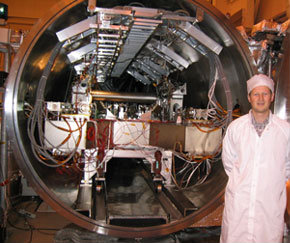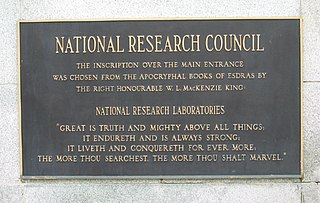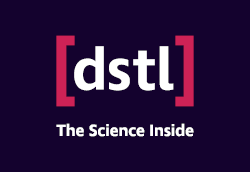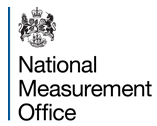Related Research Articles
The National Institute of Standards and Technology (NIST) is a physical sciences laboratory and non-regulatory agency of the United States Department of Commerce. Its mission is to promote American innovation and industrial competitiveness. NIST's activities are organized into laboratory programs that include nanoscale science and technology, engineering, information technology, neutron research, material measurement, and physical measurement. From 1901 to 1988, the agency was named the National Bureau of Standards.
In measurement technology and metrology, calibration is the comparison of measurement values delivered by a device under test with those of a calibration standard of known accuracy. Such a standard could be another measurement device of known accuracy, a device generating the quantity to be measured such as a voltage, a sound tone, or a physical artifact, such as a meter ruler.

Metrology is the scientific study of measurement. It establishes a common understanding of units, crucial in linking human activities. Modern metrology has its roots in the French Revolution's political motivation to standardise units in France, when a length standard taken from a natural source was proposed. This led to the creation of the decimal-based metric system in 1795, establishing a set of standards for other types of measurements. Several other countries adopted the metric system between 1795 and 1875; to ensure conformity between the countries, the Bureau International des Poids et Mesures (BIPM) was established by the Metre Convention. This has evolved into the International System of Units (SI) as a result of a resolution at the 11th General Conference on Weights and Measures (CGPM) in 1960.

The National Research Council Canada is the primary national agency of the Government of Canada dedicated to science and technology research & development. It is the largest federal research & development organization in Canada.

The Commonwealth Scientific and Industrial Research Organisation (CSIRO) is an Australian Government agency responsible for scientific research.

Occupational hygiene is the anticipation, recognition, evaluation, control, and confirmation of protection from hazards at work that may result in injury, illness, or affect the well being of workers. These hazards or stressors are typically divided into the categories biological, chemical, physical, ergonomic and psychosocial. The risk of a health effect from a given stressor is a function of the hazard multiplied by the exposure to the individual or group. For chemicals, the hazard can be understood by the dose response profile most often based on toxicological studies or models. Occupational hygienists work closely with toxicologists for understanding chemical hazards, physicists for physical hazards, and physicians and microbiologists for biological hazards Environmental and occupational hygienists are considered experts in exposure science and exposure risk management. Depending on an individual's type of job, a hygienist will apply their exposure science expertise for the protection of workers, consumers and/or communities.
The Radiological and Environmental Sciences Laboratory (RESL) is a government-owned and government-operated laboratory operated by the U.S. Department of Energy Idaho Operations Office. It reports directly to the DOE-ID Assistant Manager for Technical Programs and Operations, and is located at the IRC in Idaho Falls, Idaho. RESL and its predecessor organizations have been part of the DOE-ID since 1949.

Metrication in Australia effectively began in 1966 with the conversion to decimal currency under the auspices of the Decimal Currency Board. The conversion of measurements—metrication—commenced subsequently in 1971, under the direction of the Metric Conversion Board and actively proceeded until the Board was disbanded in 1981.

The Defence Science and Technology Laboratory (Dstl) is an executive agency of the Ministry of Defence of the United Kingdom. Its stated purpose is "to maximise the impact of science and technology for the defence and security of the UK". The agency is headed by Paul Hollinshead as its Chief Executive,with the board being chaired by Adrian Belton. Ministerial responsibility lies with the Minister for Defence Procurement.

The National Measurement and Regulation Office (NMRO) was an executive agency of the UK Government's Department for Business, Innovation and Skills (BIS). Its function were to provide a measurement infrastructure which supports innovation, facilitates fair competition, promotes international trade and protects consumers and the environment.

LGC Group, formerly the Laboratory of the Government Chemist, is an international life sciences measurement and tools company, which also provides the role and duties of the UK Government Chemist, a statutory role and adviser to the government. LGC also hosts the UK's National Measurement Laboratory (NML) for chemical and bio-measurement, which performs high accuracy measurements for diagnostics, advanced therapeutics, safety and security, among others.

ALS Limited is a company headquartered in Brisbane, Australia, which provides testing, inspection, certification, and verification services out of over 370 sites across 65 countries. In 2012, the company was inducted into the Queensland Business Leaders Hall of Fame.

Certified reference materials (CRMs) are 'controls' or standards used to check the quality and metrological traceability of products, to validate analytical measurement methods, or for the calibration of instruments. A certified reference material is a particular form of measurement standard.

The Faculty of Science is a constituent body of the University of New South Wales (UNSW), Australia. It is UNSW's second largest Faculty. It has over 400 academic staff and over 700 research staff and students.
The Tertiary Education Quality and Standards Agency (TEQSA) is Australia's independent national quality assurance and regulatory agency for higher education.
Iqbal Hussain Qureshi 27 September 1937 – 8 December 2012) SI, FPAS, best known as I.H. Qureshi, was a Pakistani nuclear chemist and an Emeritus professor of chemistry at the University of Karachi. Qureshi was the principal contributor of scientific understanding of various chemical elements: bismuth, cobalt, strontium, thallium, tritium, iron, rubidium, and zinc.
Kliti Grice, is a Chemist, an Organic and Isotope Geochemist and Earth Scientist known for her work in identifying geological and environmental causes for mass extinction events. Her multidisciplinary research integrates geological information with data on molecular fossils and their stable carbon, hydrogen and sulfur isotopic compositions to reconstruct details of microbial, fungal and floral inhabitants of modern and ancient aquatic environments and biodiversity hot spots. This information expands our understanding of both the Earth's history and its current physical state, with implications ranging from energy and mineral resource exploration strategies to environmental sustainability encompassing climate dynamics and expected rates, durations and scale of our future planet's health. As one of the youngest women professors in Earth Sciences, she is the founding director of the Western Australian Organic and Isotope Geochemistry Centre (WA-OIGC) and is a Professor of Organic and Isotope Geochemistry at Curtin University in Perth, Western Australia.
ANZLIC, or The Spatial Information Council, is the peak intergovernmental organisation providing leadership in the collection, management and use of spatial information in Australia and New Zealand. It supports the establishment of a Spatial Data Infrastructure in the region and has published geospatial metadata standards. ANZLIC started in 1986 as the Australian Land Information Council (ALIC) and it became the Australia and New Zealand Land Information Council (ANZLIC) in 1991. ANZLIC, now refers to itself as the Spatial Information Council.
References
- ↑ "National Measurement Institute home page". Measurement.gov.au. Retrieved 11 August 2015.
- ↑ Williamson, Susan (25 September 2003). "National analytical labs to merge". Australian Life Scientist. Archived from the original on 6 April 2012. Retrieved 23 November 2011.
- ↑ "Institute has weight on its mind". ABC Rural News. 20 May 2010. Retrieved 23 November 2011.
- ↑ "National Measurement Institute" (PDF). Measurement.gov.au. Retrieved 11 August 2015.
- ↑ "NMI Management Team" . Retrieved 9 December 2011.